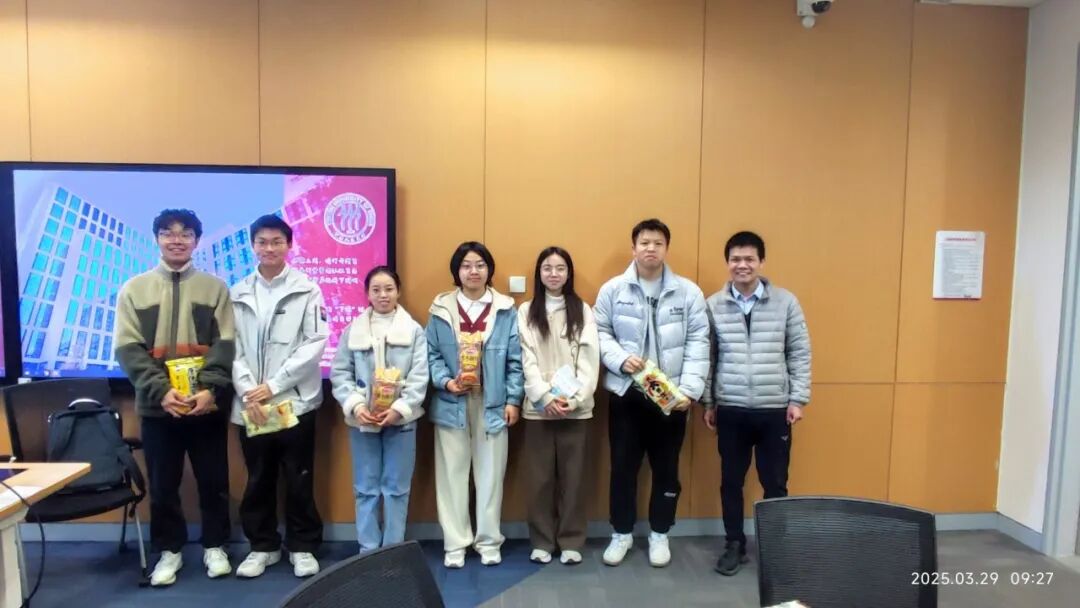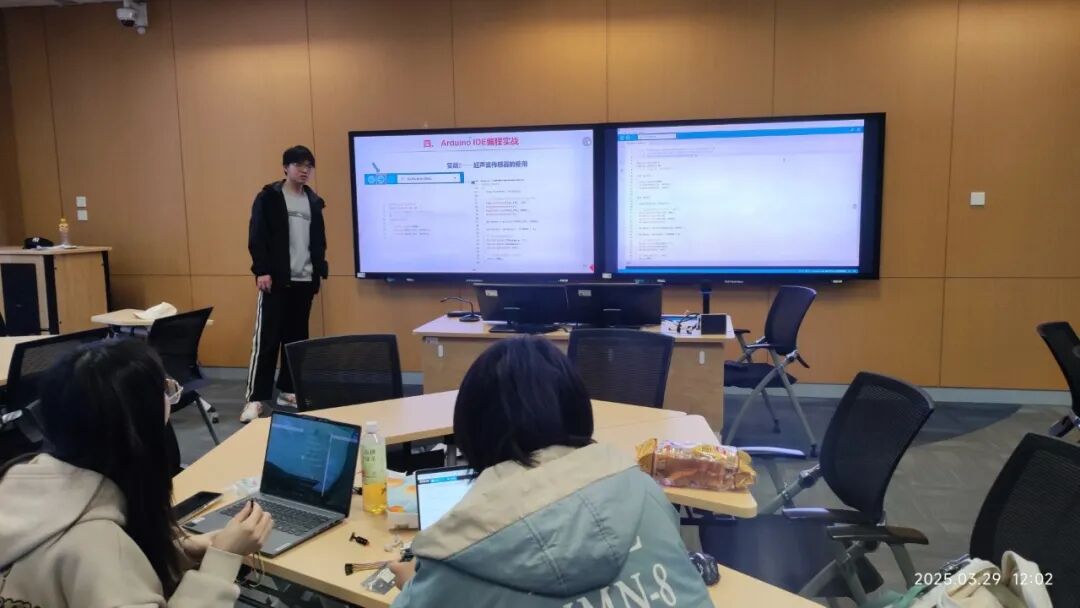On the morning of March 29, 2025, in Room 309 of the Lide Building at Renmin University of China, the Artificial Intelligence Chemistry (ChemAI) research team held its third event. This event was conducted by students including Wang Yu, Yi Zeyu, Wang Yuyang, Wang Liyi, Niu Wenbo, Hu Bo, Hou Xiaoyang, Xu Yuhang, Wang Chunting, Hu Haohan, Bu Zhiheng, He Xinyu, and Guo Liyuan, with Teacher He Yonglin hosting the session.
Opening and Awards
At the beginning of the event, Teacher He Yonglin awarded students who excelled in the assignments from the last event. Xu Yuhang, Wang Chunting, Hu Haohan, Bu Zhiheng, and He Xinyu received small gifts, acknowledging and encouraging their efforts and achievements.
 Knowledge Sharing: Fundamentals of Machine Learning
Knowledge Sharing: Fundamentals of Machine Learning
Subsequently, student Wang Yuyang shared the fundamentals of machine learning. He started with the definition of machine learning and detailed its three main learning modes: supervised learning, unsupervised learning, and reinforcement learning. Through vivid examples, Wang Yuyang demonstrated the working principles of machine learning, including key steps such as feature extraction, data collection, algorithm training, and real-time adjustments. He also showcased a practical demonstration of how to implement a univariate linear regression model using Python. Wang Yuyang’s presentation not only deepened the team members’ understanding of machine learning but also provided theoretical support for subsequent project practices.
 Knowledge Sharing: Using Arduino
Knowledge Sharing: Using Arduino
Next, student Niu Wenbo introduced the use of the Arduino microcontroller. He began with the basic concepts of Arduino, explaining the types, characteristics, and how to program using the Arduino IDE. Niu Wenbo used practical cases, such as traffic light control, ultrasonic sensor usage, and the application of the DHT11 temperature and humidity sensor, to give team members an intuitive understanding of the powerful capabilities of Arduino in electronic projects. He also shared some practical programming tips and precautions to help everyone better master Arduino development.
 Research Progress Reports
Research Progress Reports
After the knowledge sharing session, the Data Sharing Group and the Intelligent Hardware Group reported on their respective project progress.
The Data Sharing Group made significant progress this week in database search optimization. They introduced an exact match feature that improves search accuracy by recognizing the input InChIKey and CAS number. Additionally, they implemented an input validation mechanism that restricts input length to 2-50 characters to prevent invalid or malicious queries. The team also studied multi-threading optimization and plans to migrate from SQLite to a high-concurrency database (such as PostgreSQL), introducing a `ThreadPoolExecutor` thread pool in the existing search view to further enhance search efficiency.
The Intelligent Hardware Group focused on developing a high-throughput ionic liquid conductivity testing system. Student Wang Liyi reported on the usage and control of stepper motors, demonstrating the wiring of the stepper motor, driver, and UNO board, along with control code examples. The team plans to learn about the working principles of peristaltic pumps next and encapsulate the Arduino functionality into a Python GUI interface to control various rotation parameters of the peristaltic pump through a graphical interface. This progress lays a solid foundation for the development of the high-throughput ionic liquid conductivity testing system.

This ChemAI event included knowledge sharing and project progress reports. Through learning the fundamentals of machine learning and practical use of Arduino, team members not only broadened their knowledge but also enhanced their hands-on skills and project development capabilities. The project progress reports from the Data Sharing Group and the Intelligent Hardware Group also showcased the team’s active exploration in technology research and application. In the future, the ChemAI team will continue to delve into the intersection of artificial intelligence and chemistry, exploring more innovative possibilities.
Written by: KIMI
Images by: He Yonglin
Layout by: Youyi Cloud AI
Reviewed by: He Yonglin, Shen Weiran